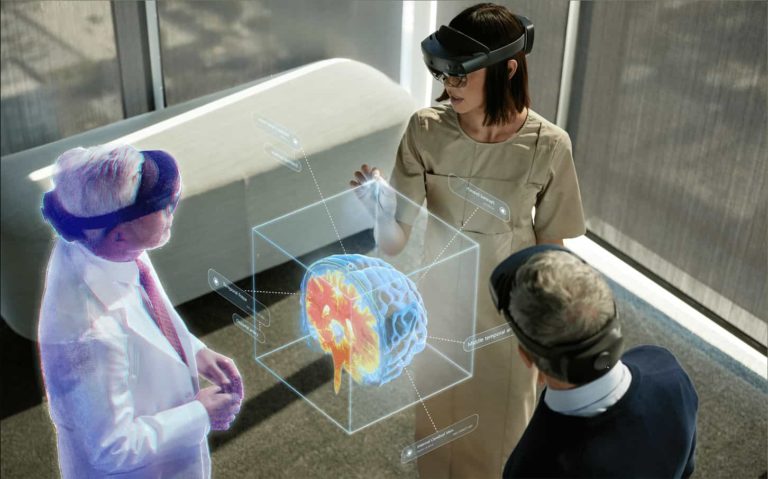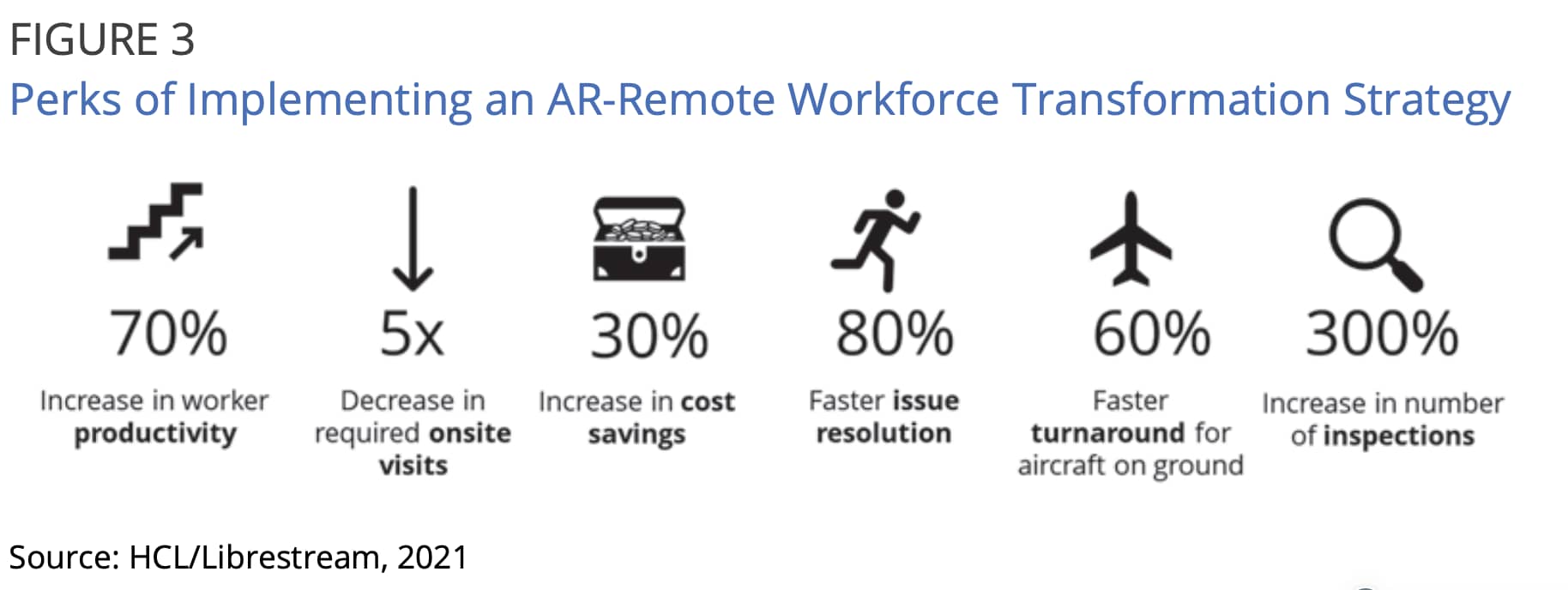
Though we spend ample time examining consumer-based AR applications and strategies, greater near-term impact is seen today in the enterprise. As is the case with many emerging technologies, enterprise AR spending has erstwhile outweighed its consumer equivalent.
To first define Enterprise AR, it takes many forms including data visualization in corporate settings, and line-of-sight instructions to support assembly and maintenance in industrial settings. It also shines in field maintenance or remote support for dispatched IT services.
In all these cases, AR’s line-of-sight orientation can guide front-line workers. Compared to the “mental mapping” they do with 2D instructions, AR lets them achieve operational efficiencies. When implemented at scale, this can add up to worthwhile bottom-line impact.
Beyond micro-economic benefits, macro-benefits include lessening job strain and streamlining knowledge transfer, which in turn preserves institutional knowledge. That happens by both delaying retirement for skilled workers and upskilling novice workers faster.
But all of the above is a familiar message. More valuable are proof points to validate enterprise ROI. We’ve done this in the past through case studies, and are returning to the topic in this week’s Data Dive – focused specifically on a new study released by Librestream and IDC.
Data Dive
So what did the report uncover? There’s a mix of enterprise survey data, IDC market sizing, and ROI metrics that are extracted from Librestream’s use in the field. Let’s take those one at a time.
Enterprise Survey Data
– 64 percent of companies will maintain or increase AR spend this year.
– 38 percent consider AR to be a core component of their 5-year digital transformation road maps.
– 33 percent of manufacturers are using AR (and VR training) to increase safety for their employees, while 32 percent use it to increase collaboration.
– Currently, 80 percent of business knowledge remains undocumented, underscoring the need for AR to optimize knowledge transfer and preserve institutional knowledge.
– The top driver (39 percent) for manufacturers’ service life-cycle management (SLM) efforts is to capture and deliver service knowledge and best practices.

Aggregate AR Metrics
– Implementing AR for remote subject-matter-expert assistance can result in…
– 70 percent increase in worker productivity
– 5 percent decrease in costly on-site visits for specialized maintenance
– 30 percent decrease in operational costs
– 80 percent faster issue resolution time
– 300 percent increase in number of inspections, given faster work and greater quality control.

Market Sizing
– According to IDC’s Worldwide AR/VR Spending Guide, the global enterprise AR market will reach $7.5 billion by 2022 and $46.6 billion by 2025.
– Manufacturing, government, and utilities will absorb 30 percent of the above spending.
– Spending on AR-enabled industrial asset maintenance, onsite assembly and safety will reach $1.5 billion by 2022.
– Utilities companies (and functions within other companies) will spend $2.5 billion on AR by 2025.
– All of the above is well aligned with the enterprise AR spending estimates from our research arm, ARtillery Intelligence.
The Catch
The above data points are telling, but it’s not all good news. Practical barriers challenge AR adoption, including organizational inertia, politics, and fear of new technology among enterprise stakeholders. When you add up these barriers, some have more to do with HR than AR.
This traces back to our “3Ps” construct: people, product, and process. Starting with people, internal communication should be customized to individual stakeholders. Instead, ROI metrics that appeal to the C-suite are often used to win over front-line workers. That won’t translate.
For product strategies, AR should be applied where it has the best product/market fit. For example, AR is effective in guiding complex, non-repetitive tasks like heavy-equipment assembly. But it doesn’t add value to simple, repetitive tasks like changing the oil in your car.
Finally, the last P is process, which is all about communications and classic change management. Programs should also follow a marketing playbook. Make the technology sexy, stress its advantages, and use thoughtful language consistently….sort of like an ad campaign.
The common thread in all of the above is to avoid common pitfalls. It’s all about setting AR up with the best chance to succeed in a given organization. After all the investment to bring AR into the enterprise, tangible returns can be better realized if it’s then deployed effectively.






